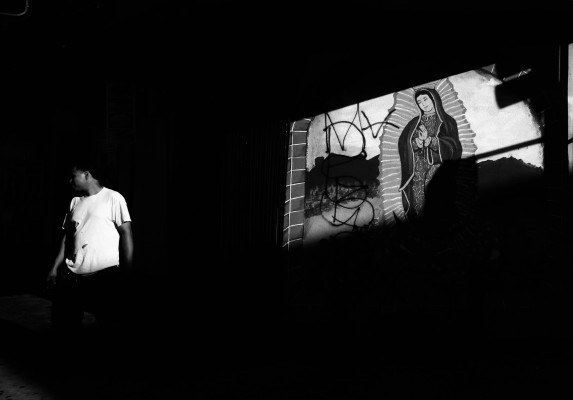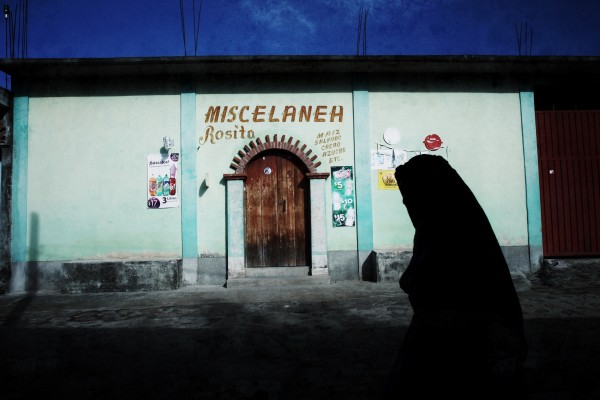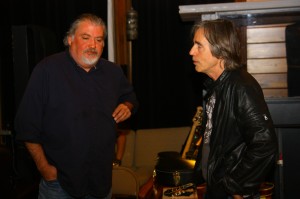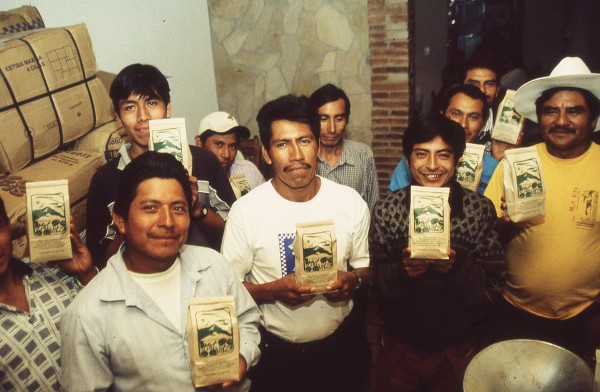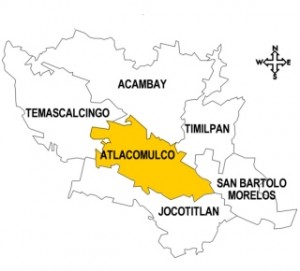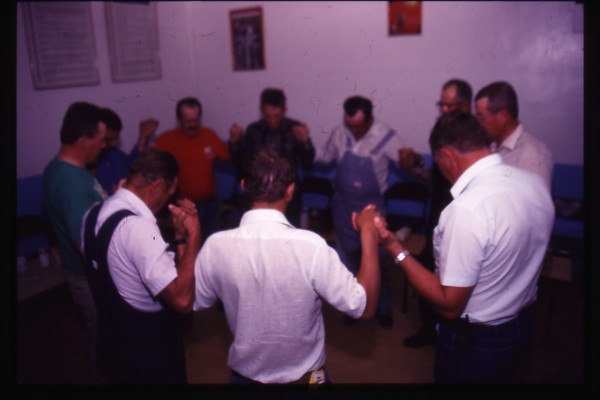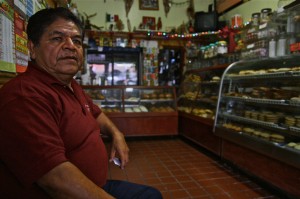Tag Archives: Mexico
MEXICO: Manuel Torres Felix, “El M1,” killed
Manuel Torres Felix, the head of security for the Sinaloa Cartel, has been killed by the Mexican military – Oct. 13, 2012.
Torres Felix, (photo left) was the brother of Javier “El JT” Torres Felix (photo right), who was the head of the cartel’s security before his arrest and extradition to the U.S.in 2006.
This time Army soldiers guarded his body to prevent it from being stolen — as happened to the corpse of Zeta leader Heriberto Lazcano a week before.
Manuel Torres Felix — also known as El Ondeado — was known to be especially bloody, and became, perhaps for that reason, the subject of numerous corridos by the new wave of corrido singers, most of whom are from Southern California and who seem to have chosen sides (or were forced to do so) in Mexico’s drug-cartel wars.
Check out, for example, Los Sanguinarios de M1 (the Bloodthirsty Ones of M1) by Los Bukanas de Culiacan (who are actually not from Culiacan, Sinaloa, but instead from Downey, CA), with plenty of references to decapitated heads, etc.
(Here’s some lyrics, and I’m not making them up:
With an AK-47 and a bazooka on our heads
blowing off heads that cross our path
We’re bloodthirsty and crazy – We love to kill
Bullets fired and extortions carried out, just like the best of us
Always in a caravan of armored cars, wearing bullet-proof vests and ready to execute people)
Man, where is the oblique, poetic style of Chalino Sanchez and his tales from the Mexican rancho now that we need them?
I find it interesting that M1, and another sicario, El Macho Prieto, became the focus of so many corridos, rather than Chapo Guzman or Mayo Zambada — the Sinaloa cartel’s leaders.
Don’t know, but his death might do something to undermine the idea that the government is in cahoots with the Sinaloa Cartel.
DRUGS: Is the “Buchon” style here to stay?
An interesting story in today’s El Debate, a daily newspaper in the state of Sinaloa, asks whether buchon style is here to stay.
Buchon is a style of dress and speech — attitudes as well — that is from the bottom of the Sinaloan drug world.
It usually involves slang, very drawled speech — which is how folks from the mountains of Sinaloa speak. It also involves guns, demeaning talk about women, glorification of the bloodthirstiest narcos, money, military garb, tricked-out trucks, and, interestingly, the veneration of Buchanan whiskey — bastardized as “Buchanas.”
Stop me if you’ve heard this somewhere before.
Buchon is a big deal in the state of Sinaloa, where Mexican drug smuggling began — as the story makes clear.
It’s also a big deal here in L.A., where Sinaloan style has dominated Mexican culture for two decades — since the life and death of narco-balladeer legend Chalino Sanchez.
Los Buchones de Culiacan are a band that plays here regularly, and in Sinaloa. (Can’t play in the state of Tamaulipas as their image is so associated with the Sinaloa Cartel, which is at war with the Zetas, whose stronghold in near the Gulf of Mexico.)
People in the southeast cities of LA County sometimes try to speak like hill Sinaloans even though they’re from states with very different cultures, such as Jalisco or Zacatecas.
As Carlos Monsivais was once reputed to have said: if you provide jobs to people, you become a hero. Or you get all the girls…..
MEXICO: Upon the death of a Drug Lord — David Hidalgo, Jackson Browne and Los Cenzontles
This morning’s news that Heriberto Lazcano (pictured here), leader of the bloodthirsty Zeta drug cartel in Mexico, may have been killed by the Mexican military reminded me of a song by Los Cenzontles, the Mexican roots-music band from the Bay Area. (Update below: Lazcano’s corpse stolen.)
The Silence was recorded in February in a session in Echo Park with David Hidalgo, from Los Lobos, who has the vocals on the track, and singer-songwriter Jackson Browne, who sings backup.
A great, elegant tune about Mexico’s drug violence — one of the few songs whose achingly beautiful feel does some kind of justice to the tragedy.
The song is from the band’s great new CD, Regeneration — for which (full disclosure) I wrote the liner notes. The album mixes norteno, a little sixties rock, some blues and funk — all in a really strong, bold sound.
The band started as part of a grant to get kids involved in music in the East Bay. Years later, it’s an accomplished crew, having recorded several albums and artists such as Hidalgo, Ry Cooder and Taj Mahal.
On a lower note, the Zetas started out as Mexican military special operations commandos and were paid to desert by Osiel Cardenas Guillen, then the leader of the Gulf Cartel, which ran the territory on the Mexican side of the Rio Grande Valley.
Cardenas, now doing 25 years in a US prison, hired them — 31 of them — as bodyguards. It took only a few years for them to realize that they could be a cartel as well. They branched off, recruited heavily among poor youth and returning deportees from the U.S. They formed new cells like amoeba, and became a fearsome force across Mexico and down into Guatemala.
See a Mexican military-issued photo of the corpse of Heriberto Lazcano.
UPDATE: Now there are reports that an armed squad of Zetas broke into the place where Lazcano’s corpse was held and made off with it.
The drama of our times — not good for much, except art sometimes.
GLOBAL ECONOMY: Guatemalan mayor declares Internet access a human right
It was only a matter of time. The mayor of an Indian town in Guatemala has declared Internet access to be a human right.
Many Indian communities suffer because they are so isolated from the world.
Anthropologists and tourists often like their Indians very traditional. But tradition has had a way of impoverishing Indian communities.
I’ve been to Indian towns where most people don’t know how to type, use a fax, or drive. Those are formulas for poverty in the global economy. I once met a guy who was learning to type who said he was the first in his village to learn that skill.
To breaking from those impoverishing traditions is one reason why so many Indians are converting to Protestantism in Latin America.
It’s an ironic thing, but the only way to maintain a strong Indian culture is not to embrace isolation, but, as this mayor has, embrace the world. That way a village can develop economically so that its people don’t have to migrate defenseless into a world where education is the currency of value.
There was a time in the 1990s when it was fashionable on the left in Latin America to talk about the pernicious effect of globalization on the poor. But really what Indian communities need above all is more globalization, which is to say, more connectivity — that is, more roads, more Internet connections, more people who know how to type, more people who speak Spanish or English, etc.
One village in Chiapas I went to (pictured here) was part of a coffee cooperative. The only thing they wanted, coop members told me, was a connection to the Internet, which would connect them, in turn, with coffee buyers in Mexico City, or Seattle, and they wouldn’t have sell their beans to the local intermediaries who gave them rock-bottom prices.
Filed under Global Economy, Migrants
MIGRANTS: Remittances worldwide increasing
Migrant remittances to their native countries worldwide are on the upswing, with $399 billion expected to be sent home this year, up from $372 billion last year.
Filed under Migrants
DRUGS: Narco “canonized”
I guess it was only a matter of time, but … Nazario Moreno, deceased leader of La Familia Michoacana, the narco-Catholic drug cartel now finding itself on hard times due to his death and that of others in the structure, has apparently been “canonized” as a folk saint.
Folk saints are nothing new to Mexico. Juan Soldado is the unofficial patron saint of migrants. Toribio Romo, a priest from Jalisco, holds a similar position. Jesus Malverde, who likely never lived at all, began as patron saint of the poor mountain folks in Sinaloa who became, in turn, the drug traffickers who made the state famous and turned Malverde into the patron saint of narcos.
Michoacan has also been fertile ground for strange religious movements — witness the community of New Jerusalem under excommunicated Padre Nabor in another part of the Tierra Caliente. (I wrote about New Jerusalem and Malverde in my first book, True Tales from Another Mexico.
Moreno, though, was particularly bloodthirsty, and considered a messiah by his followers. One of his nicknames was “El Mas Loco” — The Craziest One. Who knows? Maybe in Apatzingan, Michoacan — an area known for violence, heat, and dope — that’ll be what recommends him to the faithful.
MEXICO: A New President
Twelve years after peacefully voting out in a clean election the party that had ruled it as a political monopoly for seven decades, Mexicans returned the Institutional Revolutionary Party (PRI) to power the same way, with not only a president but what appears to be a majority in Congress (NB: It now appears the PRI will not have a congressional majority).
Enrique Pena Nieto won with an eight-point majority Sunday that was comfortable though much smaller than polls were indicating. The PRI also won governors’ posts in Jalisco, Hidalgo and Chiapas.
Pena Nieto takes office on December 1. Not many appear to know what he’ll do as president. (I’ll be discussing the elections this morning at 11:20 a.m. on KPCC –89.3- with host Larry Mantle and Mexicanist Andrew Selee. Here’s what Andrew Selee had to say about the election.)
EPN’s background, though, wouldn’t seem encouraging to anyone interested in the continuation of democratic reform in Mexico.
He is from Atlacomulco, a fascinating little town in the State of Mexico, the horseshoe-shaped state surrounding Mexico City that is its largest in population. (Five of Mexico’s largest cities are suburbs to Mexico City in the state of Mexico: Tlanepantla, Ecatepec, Naucalpan, Chimalhuacan, and Nezahualcoyotl.)
Some half dozen of the state’s governors have come from little Atlacomulco. The Grupo Atlacomulco is a kind of political clan. Its hallmarks through the decades of PRI hegemony were a combination of laissez-faire, some would say crony, capitalism combined with political authoritarianism and personal enrichment while in office.
In time, even the governors of the state who weren’t actually from Atlacomulco bought into the clan’s governing ideology of taking what you can get while you have the chance. One of its standard bearers, Carlos Hank Gonzalez, came up with the phrase, “Un politico pobre es un pobre politico” – a politician who is poor is a poor politician.
Hank was one of Mexico’s richest men when he died, without having spent a day working in the private sector.
His saying seemed PRI ideology, together with the preservation of its own power, for its decades as Mexico’s political monopoly.
Pena Nieto is the first from Atlacomulco to become president.
A lot has changed in Mexico that will prevent that PRI monopoly from reconstituting. There are political actors today who will counter-balance the PRI’s power. Political institutions such as the Federal Electoral Institute are no longer part of the PRI. The media is more independent.
The left seems recharged. The Yo Soy 132 movement, resembling the Occupy movement here last fall, seems at the moment to have a lot of energy, and made Pena Nieto its target.
However, EPN would appear beholden to the two television networks (Televisa and Azteca), who seem, from reporting, to have created his candidacy from nothing, and pushed it even though he seemed a candidate with severe personal drawbacks.
What of the major reforms to education, energy, labor law, and on so, that the most agree the country needs and were blocked, largely by PRI congressmen, during the years the center-right PAN had the presidency? The PRI now has the presidency and the Congress – so it can push these reforms if it wishes. Will it?
During its years of hegemony, the PRI-government made deals with drug traffickers, facilitating the trade. This is one reason small groups of narco-hillbillies over the years developed into the menacing, well-armed, bold cartels that today threaten the country’s national security.
What will EPN do? He hasn’t said.
I’m interested to see whether a party that formed without ideology can now shape one. What exactly does a Priista believe? What compass guides him? I can’t tell you. After all, this is a party that nationalized banks, then privatized them a decade later.
In the past, the party’s philosophy nationally was most brazenly expressed and practiced by the Grupo Atlacomulco in the state of Mexico.
He has said he won’t return to that past, that he’ll govern responsibly, democratically.
But will a man who comes from a political culture that is used to participating in the lucre of politics have what it takes to stand up to these forces?
I really don’t know.
Filed under Mexico
LOS ANGELES: Tuba thefts, again
Once again, tuba thieves have struck. This time: Whittier High School. Four sousaphones.
Last time, Saturday Night Live did a Weekend Update bit on the phenomenon.
Lightheartedness aside, I find the topic interesting because tubas are the emblematic popular instrument of our time in Southern California — just like the electric guitar was in the 1970s.
A reporter could probably have fashioned a whole beat writing about the culture surrounding electric guitar during those years. (In Claremont, where I grew up, there were easily 20 guys in my high school class who played guitar, and, if memory serves, six guitar stores within a few-mile radius.)
I think the same is true today of tubas. Their popularity says a lot about the region and the time.
Filed under Culture, Los Angeles, Mexico, Migrants, Southern California
DRUGS: Narco Mennonites arrested again
Years ago, I had a run-in with drug-smuggling Mennonites in the area around Cuauhtemoc, Chihuahua in Mexico, and wrote about it, and the decay of traditional Mennonite communities there, in my second book, Antonio’s Gun and Delfino’s Dream.
A recent narcotics arrest in Canada is about that as well. The Mexican Old Colony Mennonites have been working with drug cartels, and been major importers of marijuana and cocaine to Canada and the U.S. themselves, for years.
They began in the late 1970s, early 1980s, and were able to use their ingenuity as mechanics and welders to fashion new hiding places for drugs in trucks and cars.
For my book, I found that the largest drug bust in the history of the state of Oklahoma up to that time was a Mennonite ring run out Cuauhtemoc. The main informant, now presumed dead, was himself Mennonite.
Used to be a Mennonite family crossing into El Paso would be waved through Customs. Now they get the full treatment — drug dogs, mirrors under the car, etc.
One man I spoke with said a common way to smuggle drugs was to strap them around a senile grandmother, wearing a long dress and a traditional bonnet and looking for all the world like a peasant for the 1800s.
This photo here is from an AA meeting I attended for Mennonites in the communities near Cuauhtemoc.
FOR THE RECORD: Gangs and Mexican governors’ races
UCLA criminologists have published a study showing that most gang violence occurs where gang territories meet, and thus are where gangs are most likely to run into each other and be in competition — not, I would say, a surprising conclusion, but interesting to see the school take on the topic, nevertheless.
The authors draw their conclusions from studying LAPD’s Hollenbeck division, 563 gang shootings involving 13 gangs.
Meanwhile, Mexico scholar George Grayson has published an article on the Mexican presidential election and its effect on various Mexican governors’ races. Grayson is always interesting to read. Check it out
Filed under For The Record, Gangs, Mexico
PODCAST: Juan Gutierrez, Oaxacan baker in Santa Monica
Welcome to a new feature of my blog — podcast interviews — which I hope to do more of.
The first one is a conversation with Juan Gutierrez, a Zapotec Indian from Oaxaca. His Panaderia Antequera in Santa Monica is believed to be the first Oaxacan-owned business in the L.A. area, opening in the late 1980s.
The conversation is about his arrival here, working at Shakey’s, and opening his bakery — a piece of oral history of a people’s move north.
These last few years a mini-boom in Oaxacan owned businesses has been underway in L.A., spurred by several factors: the idea many have now that they’re not going to be returning home; the size of the Oaxacan immigrant consumer market in L.A.; and a general dispelling of the fear and intimidation with which many Oaxacans, formerly campesinos, viewed business.
The interview is in Spanish and runs about 24 minutes.
I’m hoping to talk to more folks like Mr. Gutierrez, pioneers, people with interesting stories — as well as authors of books that are relevant to the themes of this blog.
Feel free to suggest some.
Filed under Los Angeles, Mexico, Migrants, Podcast, Southern California
MEXICO: Mexican Spring?
I’ll be talking about the Mexican presidential elections today on KPCC, with Larry Mantle, host of Air Talk, beginning at 11 a.m. Please tune in.
Meanwhile, an interesting column from academic Guillermo Trejo about the rise of the Occupy-like student movement, Yo Soy 132, and whether it can influence the Mexican presidential election next Sunday.
Polls showed that the movement drained frontrunner Enrique Pena Nieto, of the PRI, of a good part of his c0mmanding lead, while Andrew Manuel Lopez Obrador, of the left PRD, surged to within a few points of him in some surveys.
The movement has put the issue of the manipulation by the Mexican media conglomerates — Televisa and Television Azteca — to the forefront of the campaign, where it deserves to be.
Still, it’s unclear whether 132 has enough oomph to push AMLO ahead for good. Should be an interesting election.
More soon on Pena Nieto and his political forefathers.
Filed under Mexico

